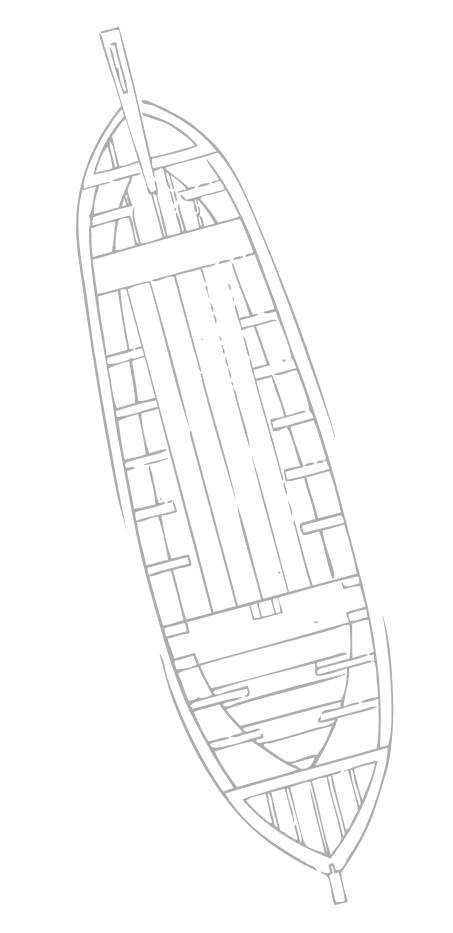The Godbout rowboat shop
History of the rowboat shops in Saint-Laurent
In the 19th century, the first rowers settled in the village of Saint-Laurent. The rowhouses extended eastward on the south side of Chemin Royal, very close to the shore. Undecked boats were built there that offered no protection to sailors, passengers or goods. They reached a length of 13 meters and were used for travel on the river, in particular during visits to the agricultural markets of Quebec and to link the villages of the island.
The current bridge was built only in 1935, so the seaway was the best way to get to Quebec. Thanks to the economic spin offs they generate, rowboats were important for the municipality. Then in the 20th century, the rowboats were made only 4.5 meters long. They are now used as lifeboats on board ships and for leisure. One of the last rowers on Île d’Orléans was François-Xavier Lachance, who also worked at the Shipyard of Saint-Laurent. A virtual exhibition is available to learn more about this trade.


The Godbout rowboat shop from 1837
In 1989, one morning in June, a surprising sight unfolded on the waters of the St. Lawrence River. The Godbout rowboat shop, formerly located a few kilometers from the maritime Park, was indeed beginning its first and last voyage. It was previously located on the family land of the Godbout family. In order to preserve one of the last remnants of the rowboat manufacturing industry, the 1837 rowboat shop was placed on a truck, on a barge and moved by waterway to its current location at the maritime Park. Even the stone foundations followed. Each stone has been numbered to be replaced in its former location. The Godbout rowboat shop has also been classified as cultural property, as has the impressive collection of tools it houses.
The interpretation of the rowboat shop
An extensive collection of tools and reproductions of vintage rowboats are displayed in the historic building. Interpretation panels as well as our commented and audio-guided tour interpret the construction of wooden rowboats in the 19-20th century.


